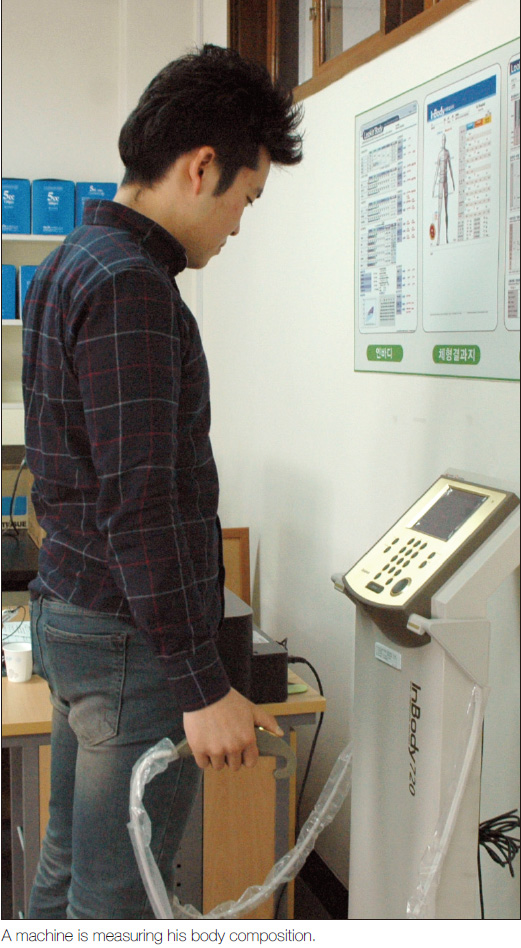
CBNU students’ participation in the health check this year was at a low level, 31.84%. The participation rates so far from 2008 are 34.61%(2008), 21.81%(2011), 28.26(2012). In 2009, only freshmen took part because of a Novel swine-origin influenza A(H1N1), and in 2010, there was no health check because of a budget shortage.
Last March 11th, there was the health check for students in CBNU. It was conducted for 5 days, from the 11th to the 15th, for freshmen and juniors. The health check was arranged by the health center on campus. It was for free after simple registration steps. The health check procedures were uroscopy(urine sugar test, occult blood test in urine, hemoglobin, renal failure, urinary stones, renal disease), a blood test(blood sugar, total cholesterol, AST, ALT, Hemoglobin), hepatitis B, anthropometry investigation, blood pressure, obesity index, and the Beck depression inventory. The results were individually uploaded on April 8th online on a CBNU information system.
The health check has been providing an important role in respect to improving health by uncovering health problems and improving living habits through checking twice during university life. However, the participation rate has been staying at a low level.
According to this year’s participation rate of the health check, the predicted number of students was 3,638(50%), but only 2,246(30.8%) participated. The rate of each grade appeared as 45% for freshmen and 18.49% for juniors, showing a huge difference.
In a survey given to 157 students by CBT about the health check service, 61 students answered that they did not take the service out of the 100 students who were eligible for the health check. Two major reasons were ‘being lazy’, 39.3%, and ‘not having enough time’, 24.59%. In addition, 13.1% and 9.83% answered ‘already healthy’ and ‘unaware of the service’.
Considering that, Kim Hak-ran, the operator of the health checking service of CBNU said, “Judging from the statistics of the participation rate, there has always been more freshmen participating than juniors. I suggest students take care of their health more when they are healthy. Actually, there were some students who found an unexpected disease when they simply came to take a check. I think there’s no way but to have voluntary interest in health. We are promoting the service better by sending text messages directly to every student, but students are likely to participate more when they hear from their friends or seniors than from the school. If older students recommend the health check service to the younger students, the participation rate as well as the health level of students surely would increase.”
Almost all students who participated in the health check said that they were satisfied with the service. When taking a poll on the level of satisfaction, 51.28% said ‘satisfied’, and 33.3% said ‘fair’. Lee Su-bin(Dept. of Earth Science Education, freshman) said, “It was convenient that I could easily go at school.” “The free service was what I loved,”(Kim Seong-jun, School of Civil Engineering, junior) “I was glad to have an opportunity to check my health condition”(Kim, Dept. of English Language and Literature, freshman)
Students’ Opinions about the Health Check
While positive opinions were prevalent, some students expressed that they wanted an improvement, especially about the waiting time. Choi Young-joo (School of Civil Engineering, junior) said, “I hope there will be more inspectors and a reduced waiting time,” and Lim Monica(Dept. of English Language and Literature, junior) said, “I had to give because there was too many people, and I had no time. It would be better if there were more time.”
Since health care is always a significant factor, students’ interest and spontaneous participation are needed, as well as steady improvements of health checking conditions.
Park Se-ha
sh33@cbnu.ac.kr


 All
All Campus News
Campus News






 Park Se-ha
Park Se-ha











